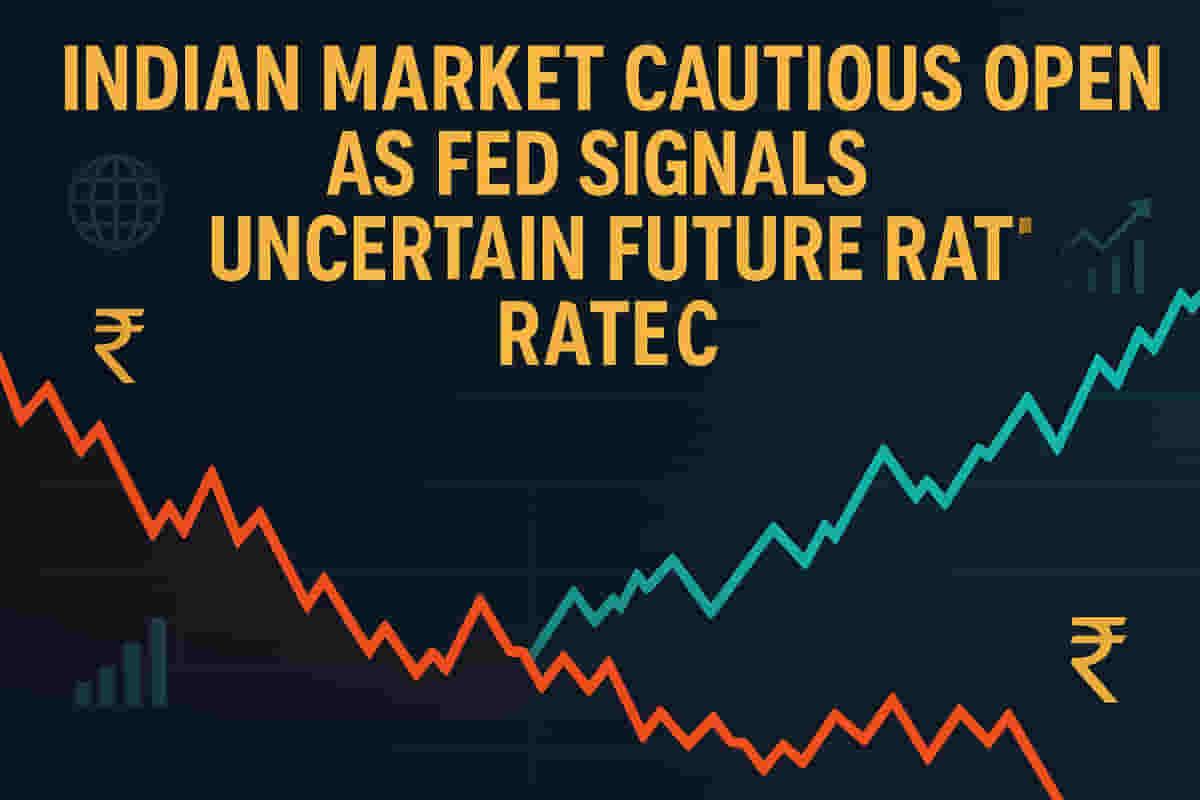Indian Markets Open Cautiously Amid Mixed Global Cues and Fed Rate Cut Signals
Economy
|
30th October 2025, 5:36 AM

▶
Stocks Mentioned :
Short Description :
Detailed Coverage :
Indian stock markets, including the Sensex and Nifty, commenced Thursday's trading session on a cautious note, experiencing minor declines. The Sensex opened lower by 507.90 points to 84,489.23, and the Nifty fell by 154.15 points to 25,899.75, as of 9:55 am IST. This subdued opening occurred despite the widely anticipated 25-basis-point rate cut by the US Federal Reserve. However, optimism was tempered by Federal Reserve Chair Jerome Powell's remarks indicating that further rate cuts in 2025 are not guaranteed, creating mixed global cues.
Foreign Institutional Investors (FIIs) turned net sellers on Wednesday, offloading equities worth ₹2,540.2 crore, while Domestic Institutional Investors (DIIs) continued their buying spree, investing ₹5,692.8 crore. This shift in institutional activity contributed to the cautious sentiment.
Technical analysts observed that the Nifty is maintaining a sideways-to-bullish bias as long as it stays above the 25,900-26,000 support zone, with immediate resistance seen around 26,100-26,200. The Bank Nifty also showed resilience, trading within an ascending channel, with key support at 57,900-58,000 and resistance at 58,400-58,500.
On the domestic front, positive indicators include the Chief Economic Adviser's projection that India's GDP growth could reach 7 per cent this year, supported by strong economic data and robust domestic consumption. This outlook, combined with the Fed's move, clears the path for the Reserve Bank of India (RBI) to potentially cut the repo rate in its upcoming meeting, which would further support the banking sector.
Oil prices saw a slight dip, with Brent crude trading down 0.20 per cent and WTI crude down 0.25 per cent. Market participants are now closely watching the upcoming Trump-Xi summit and corporate earnings reports from companies like ITC, Pidilite Industries, Cipla, and Maruti Suzuki.
Impact This news has a significant impact on the Indian stock market, influencing investor sentiment, sector performance, and potential future monetary policy decisions. The interplay of global economic factors, institutional flows, and domestic economic strength creates a complex environment for investors. Rating: 8/10
Definitions GDP (Gross Domestic Product): The total monetary or market value of all the finished goods and services produced within a country's borders in a specific time period. Federal Reserve (Fed): The central banking system of the United States. Repo Rate: The rate at which the Reserve Bank of India lends money to commercial banks in the event of a shortfall of funds. FII (Foreign Institutional Investor): An investor who invests in the securities of a country other than their own. DII (Domestic Institutional Investor): An investor who invests in the securities of their own country. Ascending Channel: A technical analysis pattern where prices trade between two upward-sloping parallel lines. Support Zone: A price level where a downtrend can be expected to pause due to a concentration of demand. Resistance: A price level where a downtrend can be expected to pause due to a concentration of supply. Sensex: A benchmark index of 30 well-established Indian companies listed on the Bombay Stock Exchange. Nifty 50: A benchmark Indian stock market index that represents the weighted average of 50 of the largest Indian companies listed on the National Stock Exchange. Bank Nifty: A sector-specific index that represents the banking sector of the Indian stock market.